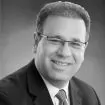An employee stock ownership plan ("ESOP") is a qualified retirement plan that can serve as a tremendous business succession tool for business owners of privately held corporations.
Imagine the scenario in which a business owner spends 30+ years of his working life creating and growing a successful privately held business. After a successful run, this owner whose children have little interest in taking over the business decides to cash out and sell his stock in the business to a private equity firm. Before inking the deal, the business owner who wants to stay active in the business negotiates a two year employment agreement for himself and tries to protect the employees by including a provision in the purchase agreement that states the company must remain in the same facility for the next three years. As you might imagine, two years after the business owner sold the business, the private equity firm (the now owners of the company) decided not to renew the business owner's employment agreement - forcing him to retire at the age of 62. A year after forcing the business owner out of the company, the private equity firm decided to consolidate business operations and move the company some 300 miles away - causing most of the employees to lose their jobs with the company.
Had this business owner sold his company stock to an ESOP, the above result would never have occurred.
A business owner can monetize his or her capital investment in their business by selling some or all of their company stock to an ESOP and still maintain an active role in the business that he or she created. Moreover, the business owner can maintain and protect the job security of the employees and provide them with a supplemental retirement benefit. In fact, empirical data proves that ESOP owned companies are more profitable and have lower turnover rates than non-ESOP companies.
The best way to demonstrate how a leveraged ESOP transaction occurs is by example. Let us assume a business owner ("John") is looking to sell 40% of his company (a subchapter C corporation) to an ESOP for $5 million. Once the Company, John and the ESOP negotiate the terms of the deal, the Company will lend $5 million (the Company obtains this money from either a commercial bank, company cash, seller notes or a combination thereof) to an ESOP for a note. The ESOP, in turn, uses the $5 million loan proceeds to purchase the 40% interest in company stock from John. John (under certain circumstances) may be able to avoid having to pay capital gains tax on the $5 million in sale proceeds (the mechanics of this 1042 Code Section tax deferral election is beyond the scope of this article). In addition to monetizing a portion of his capital investment in the Company, John still remains the majority owner of the business - something a private equity firm would never permit.
Each year the Company will make a tax deductible contribution to the ESOP so that the ESOP can pay its annual debt service requirement back to the Company (remember the ESOP borrowed the $5 million from the Company for a note). The net cash flow from Company to ESOP and then from ESOP back to Company is cash neutral. In other words, the Company is not out of pocket any dollars once the ESOP effectuates its debt service payment back to the Company. However, this circular flow of funds generates a sizable tax deduction for the Company which means that the Company can pay back outside bank financing (the Company probably borrowed a portion of the $5 million from a bank) with pre-tax dollars. This results in tax-advantaged financing for the Company.
As for the employees and as the $5 million note is paid off (let us assume it is a 10 year note), each employee / participant in the ESOP will receive an allocation of company stock in his or her account. Here, 10% of the company stock that was purchased by the ESOP is allocated each year to the participants (in the aggregate). After 10 years, all of the Company stock that was purchased by the ESOP will be allocated to the participant accounts. Over the years, each participant's account balance will grow in size and will prove to be a real supplemental retirement benefit for such participants. This ESOP benefit is completely employer paid. There is no cost to the participant.
There are about 10,000 ESOPs in the United States, covering over 10 million employees which equate to about 10% of the private sector workplace. There are certain macro factors that support ESOPs in today's economy. Several of these factors include: (a) baby boomer business owners are approaching retirement age and need an exit strategy; (b) stock market multiples are at a near or multi-year highs; (c) borrowing rates on loans are low; and (d) bank's lending parameters have generally loosened in the last few years.
The following link is to an article of a new ESOP owned company. The team at Archer orchestrated this transaction and helped the company reach it goals of becoming employee owned.
http://www.capegazette.com/article/trinity-logistics-announces-employee-ownership-plan/137941
The content of this article is intended to provide a general guide to the subject matter. Specialist advice should be sought about your specific circumstances.





